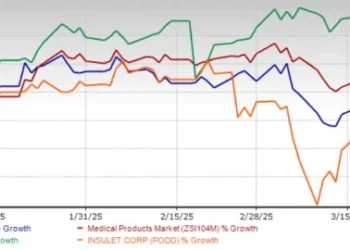Introduction
Tirzepatide and semaglutide represent two of the most potent and widely used medications in the management of type 2 diabetes mellitus (T2DM) and obesity. While both belong to the class of incretin-based therapies, their mechanisms of action differ significantly, influencing their indications, efficacy, and optimal switching strategies. The decision to use tirzepatide instead of semaglutide—or to transition between the two—depends on several patient-specific factors, including treatment response, weight management goals, cardiovascular outcomes, and tolerability.
This article explores the clinical scenarios in which tirzepatide is preferable over semaglutide, when switching between these agents is warranted, and the primary considerations in ensuring a smooth transition.
Pharmacological Differences Between Tirzepatide and Semaglutide
Tirzepatide is a novel dual glucose-dependent insulinotropic polypeptide (GIP) and glucagon-like peptide-1 (GLP-1) receptor agonist, while semaglutide is a selective GLP-1 receptor agonist. Their distinct mechanisms contribute to differences in efficacy, tolerability, and metabolic outcomes.
- Semaglutide (Ozempic, Rybelsus, Wegovy): A GLP-1 receptor agonist that enhances insulin secretion, suppresses glucagon release, and delays gastric emptying.
- Tirzepatide (Mounjaro): A dual GIP/GLP-1 receptor agonist that not only stimulates insulin secretion and suppresses glucagon release but also enhances lipid metabolism and weight loss more effectively than semaglutide.
Comparative Clinical Efficacy
A pivotal head-to-head trial, the SURPASS-2 trial, demonstrated that tirzepatide at doses of 10 mg and 15 mg resulted in superior HbA1c reduction and weight loss compared to semaglutide 1 mg. Key findings include:
- HbA1c reduction: Tirzepatide (15 mg) lowered HbA1c by 2.46% vs. 1.86% with semaglutide.
- Weight loss: Tirzepatide (15 mg) led to a mean weight reduction of 11.2 kg compared to 6.9 kg with semaglutide.
Given these results, tirzepatide is often the preferred choice when weight loss is a primary treatment goal.
When to Indicate Tirzepatide Over Semaglutide
1. Patients with More Significant Weight Management Needs
While both medications promote weight loss, tirzepatide has consistently shown greater efficacy in reducing body weight due to its dual agonist properties. Patients with obesity (BMI >30 kg/m²) or overweight individuals (BMI >27 kg/m²) with comorbidities may benefit more from tirzepatide, particularly if previous attempts with semaglutide have yielded suboptimal results.
2. Patients Requiring More Potent Glycemic Control
For patients with poorly controlled type 2 diabetes (HbA1c >9%), tirzepatide’s superior glycemic control can offer an advantage. Its ability to target both GIP and GLP-1 receptors results in enhanced insulin secretion and improved postprandial glucose regulation.
3. Patients Who Do Not Achieve Target Outcomes on Semaglutide
Some individuals may have a suboptimal response to semaglutide due to factors like genetic variations, receptor desensitization, or limited tolerance to dose escalation. Switching to tirzepatide in these cases may lead to better metabolic and weight-related outcomes.
4. Patients with Higher Risk of Fatty Liver Disease (NAFLD/NASH)
Preliminary evidence suggests that tirzepatide may offer superior benefits in patients with non-alcoholic fatty liver disease (NAFLD) or non-alcoholic steatohepatitis (NASH) by reducing hepatic fat content more effectively than semaglutide.
5. Cardiovascular Considerations
While semaglutide (particularly Wegovy) has robust cardiovascular outcome data from the SELECT trial, tirzepatide’s ongoing SURPASS-CVOT trial is expected to provide more insight into its potential cardiovascular benefits. However, tirzepatide’s impact on lipid metabolism suggests it may have an added advantage in some cardiovascular risk reduction scenarios.
When to Switch from Semaglutide to Tirzepatide
1. Inadequate Glycemic or Weight Response to Semaglutide
If a patient on semaglutide 2.0 mg (highest approved dose) continues to struggle with weight loss or glycemic control, transitioning to tirzepatide may be warranted, given its enhanced efficacy.
2. Gastrointestinal Side Effects with Semaglutide
Both medications can cause nausea, vomiting, and diarrhea. However, some patients who experience severe gastrointestinal distress with semaglutide may tolerate tirzepatide better, likely due to differences in receptor activation and pharmacokinetics.
3. Personal Preference or Injection Burden
Both medications are once-weekly injections, but patients may prefer tirzepatide if they find its weight loss benefits more compelling or if they feel better with its effects on appetite and energy balance.
4. Cost and Insurance Considerations
Insurance coverage and medication affordability often dictate treatment decisions. If tirzepatide becomes more accessible or cost-effective compared to semaglutide, switching may be a practical decision for some patients.
How to Safely Switch from Semaglutide to Tirzepatide
Titration Strategies
To minimize adverse effects, a gradual switch is recommended:
- Discontinue semaglutide: Since semaglutide has a long half-life (~7 days), it is advisable to wait at least 7-10 days before initiating tirzepatide.
- Start tirzepatide at a lower dose: Initiate tirzepatide at 2.5 mg weekly, then titrate upward per standard protocols.
- Monitor for side effects: Patients should be observed for gastrointestinal symptoms, hypoglycemia (especially if taking insulin or sulfonylureas), and changes in appetite.
When to Switch from Tirzepatide to Semaglutide
1. If a Patient Experiences Intolerable Side Effects with Tirzepatide
Tirzepatide may lead to higher rates of nausea and vomiting in some individuals, prompting a switch back to semaglutide.
2. Cardiovascular Protection Considerations
If a patient has a high cardiovascular risk and prefers a medication with established CVOT data, semaglutide (Wegovy) may be favored over tirzepatide until more cardiovascular data become available.
3. If Insurance No Longer Covers Tirzepatide
Given the high costs of both medications, insurance changes may necessitate a transition back to semaglutide if tirzepatide becomes unaffordable.
4. Personal Preference or Perceived Effectiveness
Some patients may prefer semaglutide’s appetite suppression effects or experience more sustained glycemic control on it, justifying a switch back.
Conclusion
Tirzepatide and semaglutide are both highly effective therapies for T2DM and obesity, but their distinct mechanisms of action create unique clinical considerations. While tirzepatide is often preferred for greater weight loss and enhanced glycemic control, semaglutide remains a strong choice, particularly in cardiovascular risk management. The decision to switch between them should be individualized, considering efficacy, tolerability, cost, and patient preference.
For clinicians, understanding the nuances of these medications ensures optimal treatment outcomes in an era of rapidly evolving metabolic therapies.















